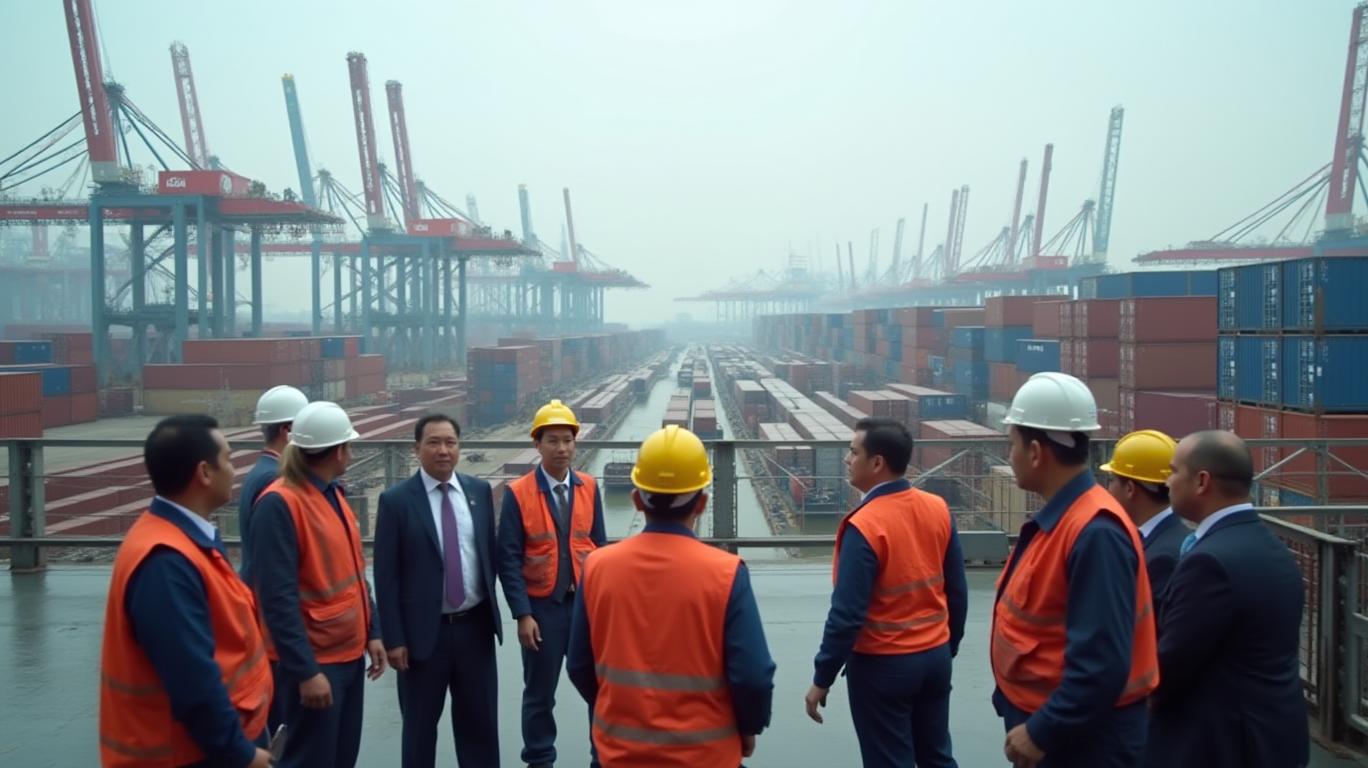US-China Tariff Truce: Capitalizing on the Export Surge While Navigating Uncertainty
The 90-day U.S.-China tariff truce, announced in May 2025, has unleashed a trans-Pacific shipping surge, with container bookings spiking by 300% in just two weeks. This fleeting window of tariff relief presents a once-in-a-decade opportunity for investors to capitalize on logistics plays while hedging against renewed trade wars through strategic bets on supply chain resilience.
Short-Term Plays: Ride the Shipping Surge
The immediate beneficiary is the container shipping sector, led by Maersk, which reported a 277% surge in China-to-U.S. bookings since the truce.

Investors should consider Maersk (MAERSK-B) and peers like Hapag-Lloyd for short-term gains. The truce’s 90-day expiration in August 2025 creates urgency: businesses are front-loading shipments to lock in lower tariffs, but capacity constraints—such as 19% of Asia-U.S. capacity idled in April—mean carriers can raise rates further.
Long-Term Resilience: Diversify Supply Chains Beyond China
While logistics firms profit from the truce’s volatility, the real long-term play lies in manufacturers and tech firms pivoting to Vietnam and Indonesia, where supply chain diversification is accelerating:
Vietnam: The New Manufacturing Powerhouse
- Electronics & EVs: Chinese firms like Luxshare, BYD, and CATL are pouring capital into Vietnam to avoid U.S. tariffs. Vietnam’s $602 average monthly wage (vs. China’s $600–800) and 45+ free trade agreements make it ideal for high-volume production.
- Spotlight Firm: Luxshare (002475.SZ), a key Apple supplier, has expanded capacity in Bac Ninh province to service U.S. markets.
Indonesia: Nickel-Driven EV & Battery Boom
- EV Manufacturing: Indonesian nickel reserves—critical for lithium-ion batteries—are luring giants like BYD and CATL. A $12B joint venture with China’s Tsingshan Group aims to build a vertically integrated EV supply chain.
- Solar & Renewables: Firms like Trina Solar are shifting production to Indonesia to bypass U.S. solar tariffs, leveraging its 35% local content exemption.
The Critical 90-Day Window—and the Risks Ahead
The tariff truce’s expiration in August 2025 is a tipping point. If talks fail, tariffs could revert to 34%+, reversing the export surge and punishing firms reliant on China-U.S. trade. Investors must:
1. Act Now: Deploy capital in logistics stocks (e.g., Maersk) to capture the current surge.
2. Hedge with Resilient Plays: Invest in Vietnam/Indonesia-based firms to insulate portfolios from future tariffs.
3. Monitor Geopolitics: Track U.S.-China negotiations—the truce’s extension hinges on progress in tech-sector restrictions and rare earth diplomacy.
Final Call: Agility is the New Alpha
The tariff truce is a high-risk, high-reward game. Short-term traders can profit from the shipping boom, but long-term investors must prioritize supply chain resilience. Vietnam and Indonesia’s growth trajectories—driven by cost advantages, strategic resources, and geopolitical necessity—make them the defensive plays to own through the next trade war chapter.
Bottom Line: The clock is ticking. Capitalize on the surge now, but keep one eye on the horizon—where the next tariff storm may brew.
This article is for informational purposes only. Investors should conduct their own due diligence and consider their risk tolerance before making decisions.

Comments
No comments yet